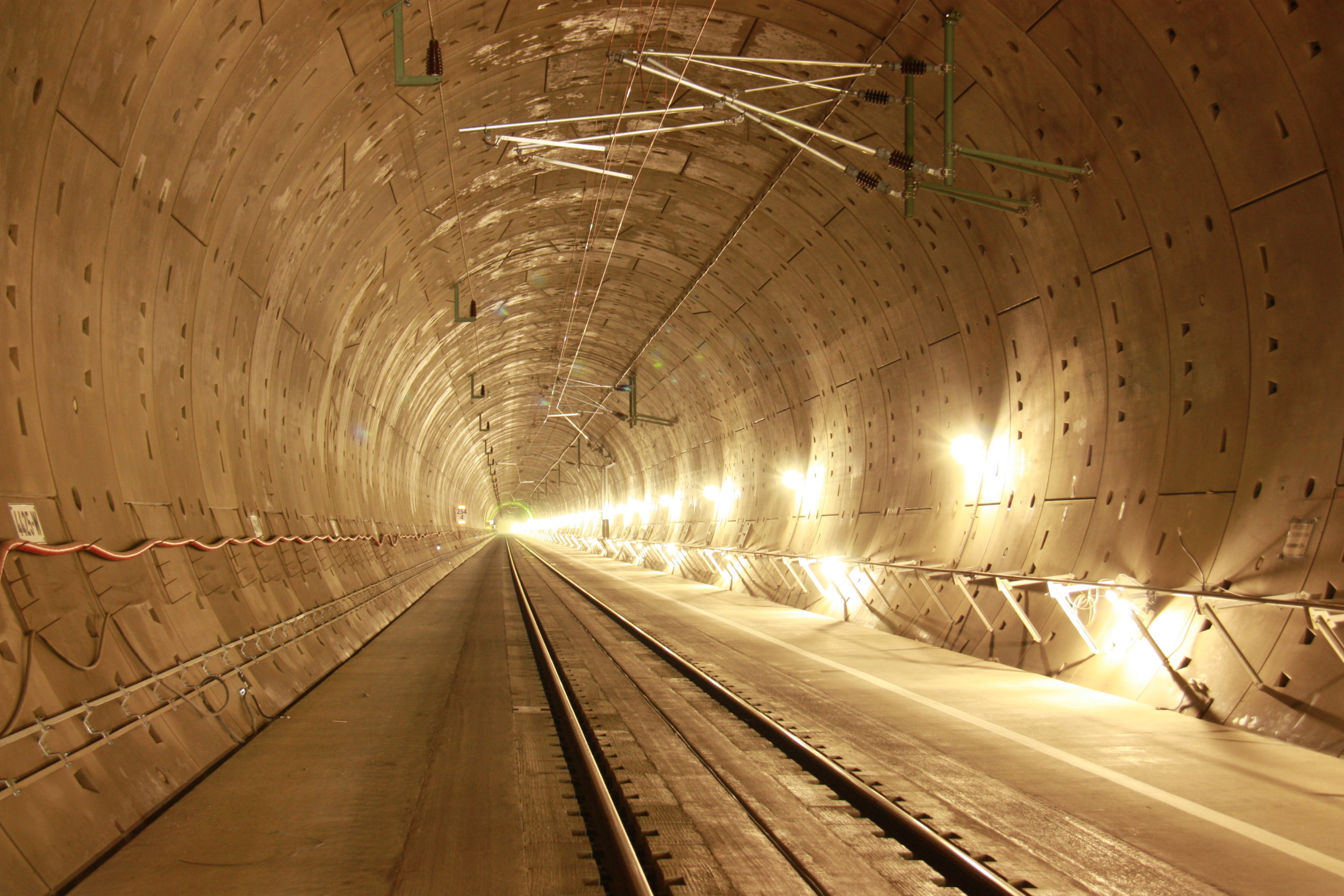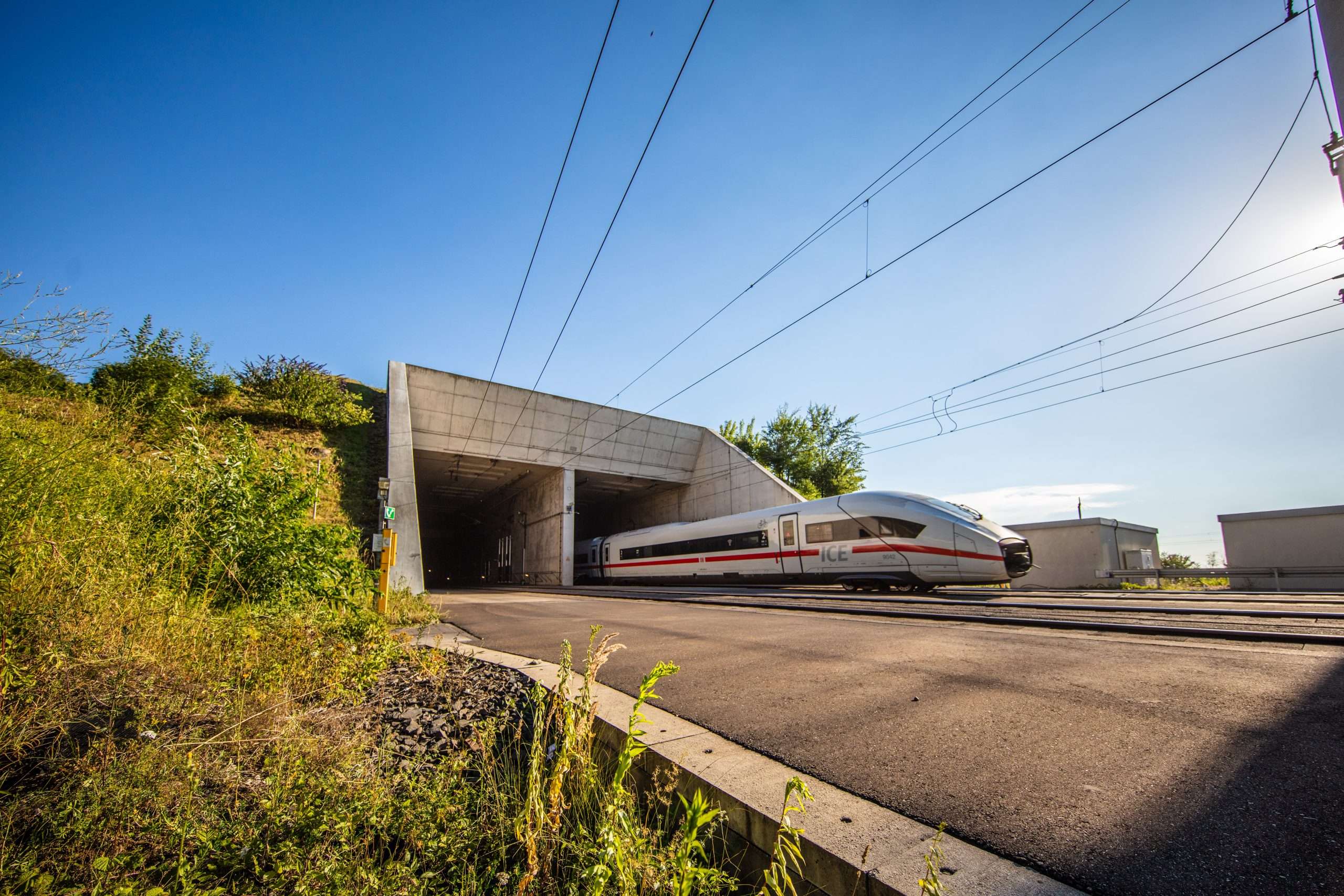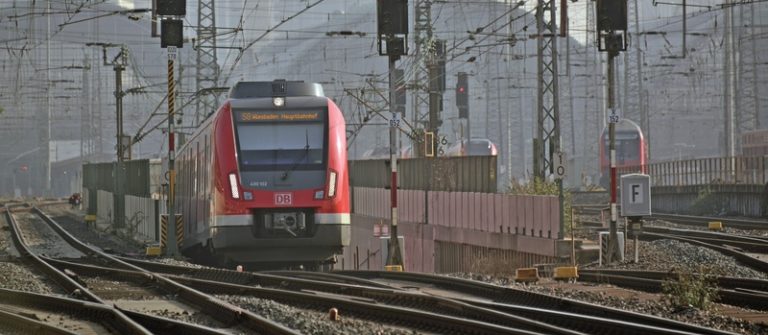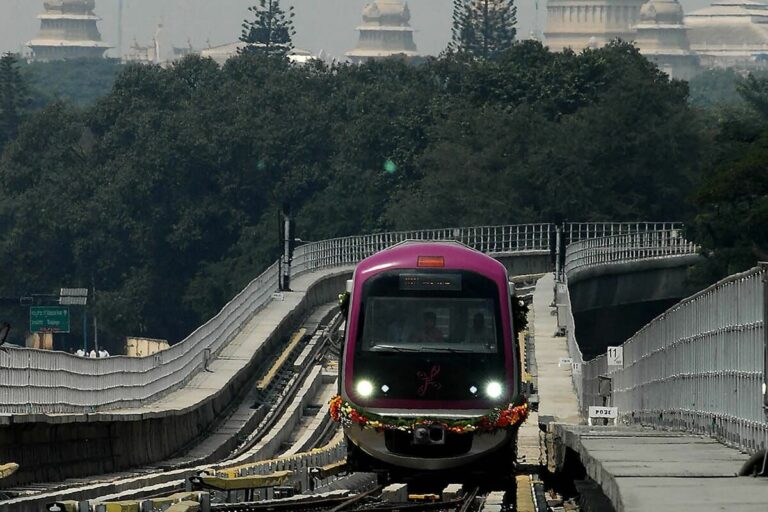


Upgrade and new-build line between Karlsruhe and Basel, Germany
The approximately 200 kilometer upgraded and new-build line between Karlsruhe and Basel, Switzerland, is one of the oldest rail lines in Germany.
It is crucial for German and international rail traffic and is part of the most important European rail corridor between Rotterdam and Genoa.
The new double-track line begins in the first section of the line between Karlsruhe and Rastatt South. The core of this section is the Rastatt tunnel, which is just under five kilometers long.
Project information
- 3 km route length
- 1 tunnel
- 1 stop
- Planning approval section:
- Karlsruhe – Bashaide
- Bashaide branch line – Ötigheim
- Ötigheim – Rastatt South
Karlsruhe-Bashaide
The northernmost design and construction phase of the major project begins at Karlsruhe Main Station. Here, trains travel on the existing tracks to the Bashaide branch line. At this point, the two new tracks of the new-build line branch off from the existing line. Work here is limited to the overhead line equipment.
Bashaide branch line – Ötigheim
In the future, two tracks will branch off from the existing rail line southwest of Rheinstetten. The new line to Basel begins at the Bashaide branch line. It runs parallel to the B36 federal highway to Ötigheim. Trains will be able to travel at speeds of up to 250 kilometers per hour along this section.
The new line runs in conjunction with the B36 bypass. When the road was built, the designers planned for shared bridges and routes for the new rail line.
Ötigheim – Rastatt South
Coming from Karlsruhe, the new line runs parallel to federal highway B36 to east of Ötigheim. Here, the rail line descends into a watertight concrete trough. It then passes through a tunnel under the city of Rastatt. At just over 4.2 kilometers long, the Rastatt tunnel is one of the largest structures in the major Karlsruhe-Basel project.
At Rastatt-Niederbühl, the tracks emerge from the tunnel, initially in a concrete trough. They then cross under federal highway (BAB) A5. Overhead line systems must be at a certain height in order for trains to travel at 250 km/h. The line therefore had to be lowered in this area, and it runs through watertight concrete trough.
Rerouting of the Rhine Valley Railway
The concept for the reconstruction of the east tunnel tube includes relocation of the existing Rhine Valley Railway to the completed west tunnel tube shell, which is one step toward putting section 1 into service. DB Engineering & Consulting (DB E&C) was tasked with construction supervision, design and consulting services, among other services.
Services
DB E&C was contracted to provide the following services:
- Construction supervision
- Construction supervision support during design and preparation of tender documents
- Underground cable installation services for relocating the cable routes running parallel to the line; routing of the new cable route through the construction site parallel to the new route
- Changing over control-command and signaling systems and telecommunication cables from the old cable route to the new cable route; preparation of the cabling for relocating two signals in the shift area
- Line adjustment for control-command and signaling based on the directory of locally permissible linespeeds (from 160 km/h to 80 km/h) due to the new track layout of the rerouting
- Foundation for new masts for the overhead line equipment between Rastatt and Rastatt South in two states of construction
- Support during the building of substructure for the rerouted track systems
- Connection and building of superstructure in two states of construction and start of service
- Support during the start of service for four rail lubricators to minimize noise
- Construction of an almost 280 m long noise barrier parallel to the new route
- Design
- Preliminary work for the plan revision
- Preliminary measure: laying cable duct
- Preliminary work for shifting (clearing the construction site for) the Rhine Valley Railway
- Relocation of the existing cable duct in the Rastatt station control area
- State of signal construction 2: speed monitoring change
- The existing speed monitoring system needed to be connected permanently to the Rastatt signal box for speed restriction sections in the approach to the line section.
- Signal relocation
- This design moved the signals in this area to their final locations
- Consulting services, technical support and inspection across technical disciplines
- Technical consulting on issues during preparation of tender documents and construction
- Common safety method: facilitation, support and work on content
- Surveying services such as track geometry inspection and general consulting services (surveying systems: open track as well as tunnels)
- Inspection design documents by designers authorized to submit construction documents (structural engineering and electromechanical engineering)






